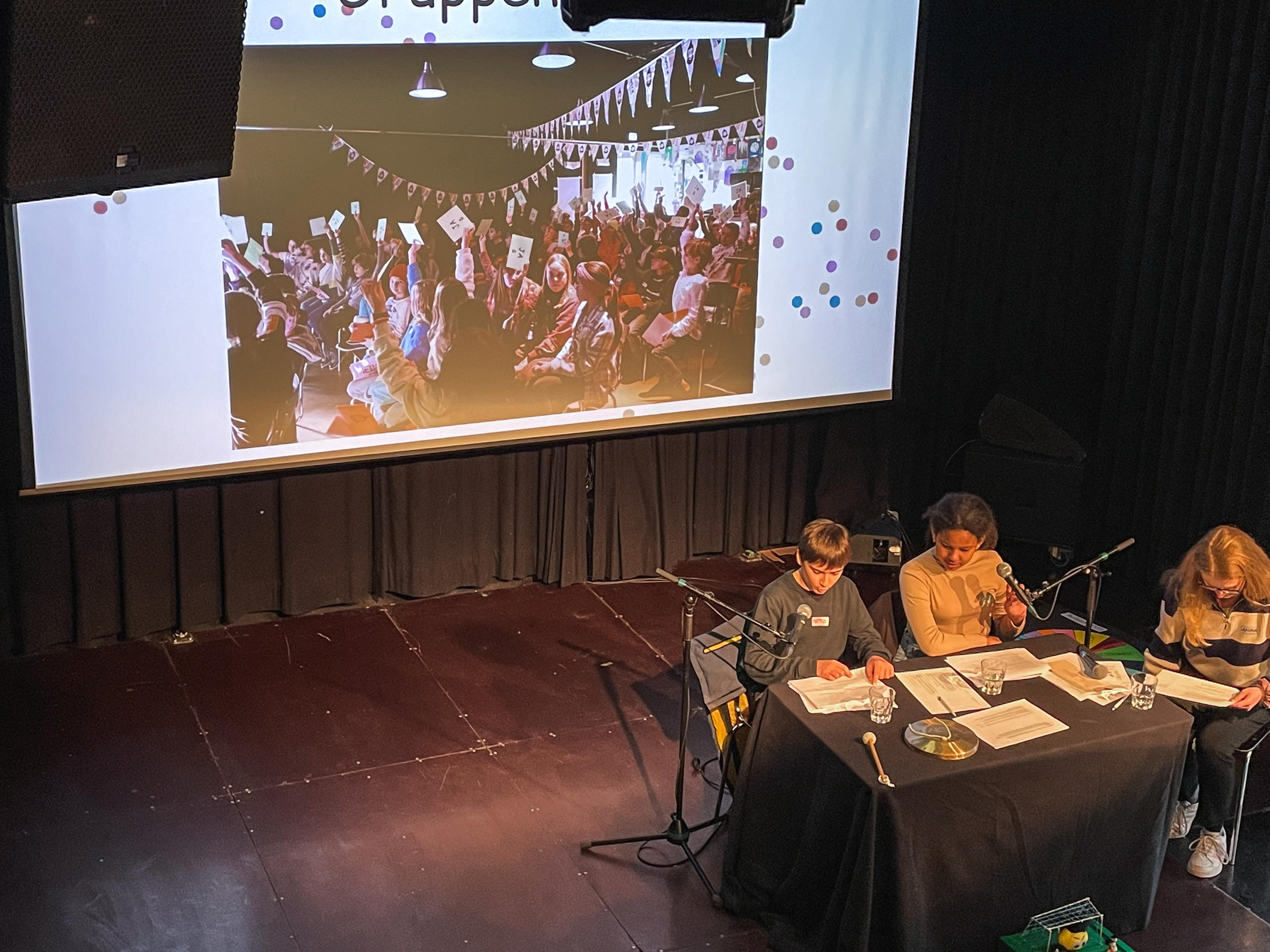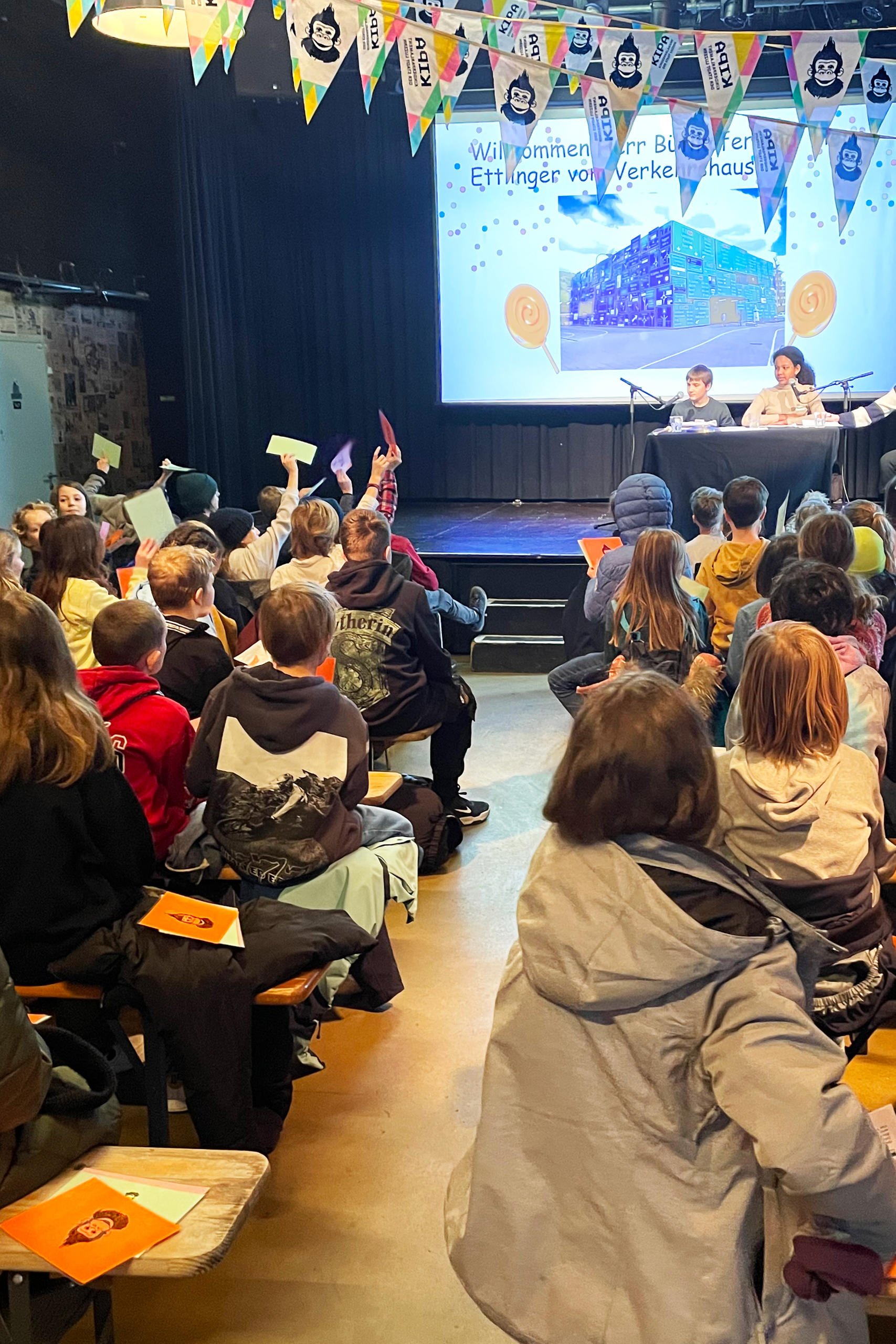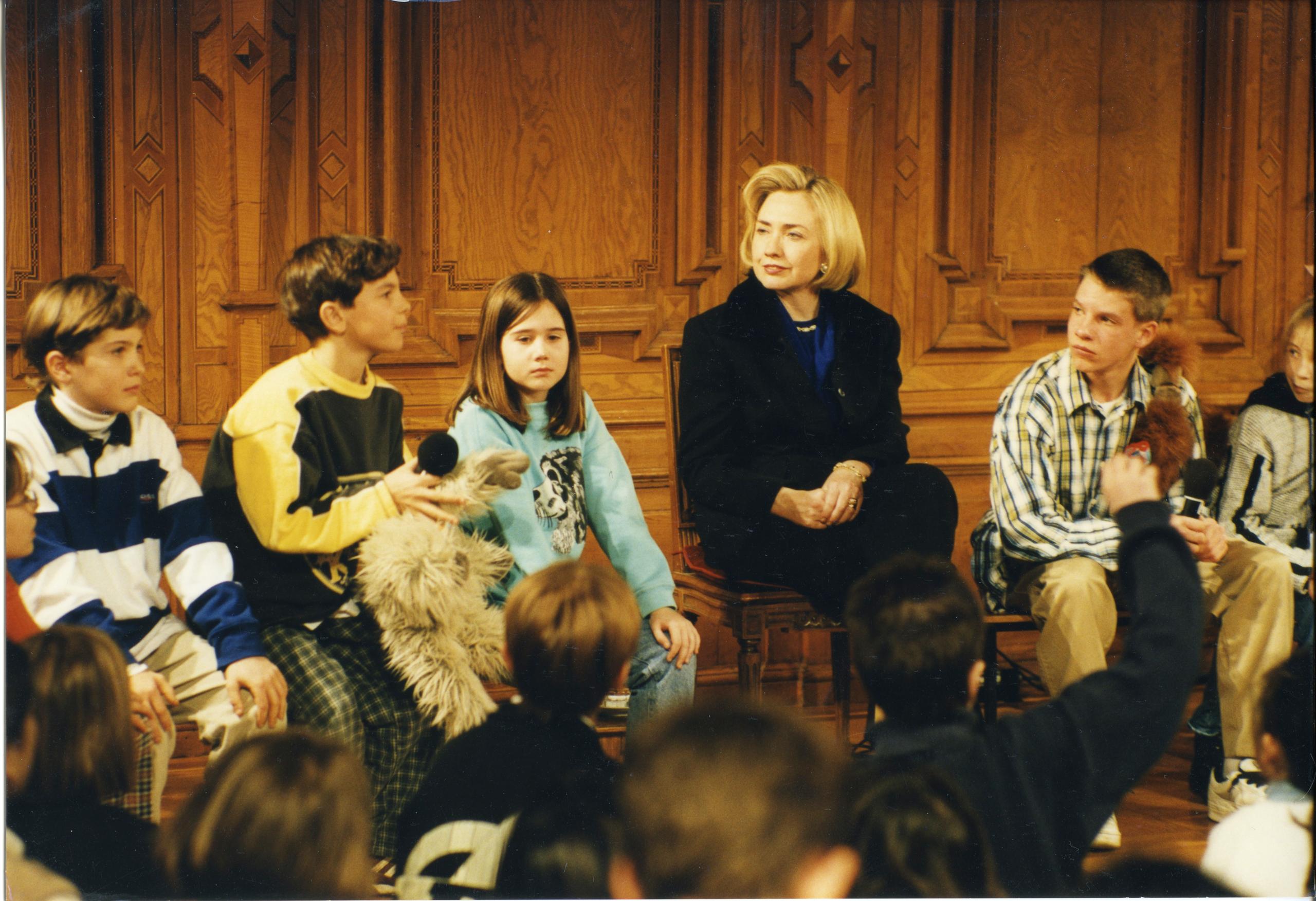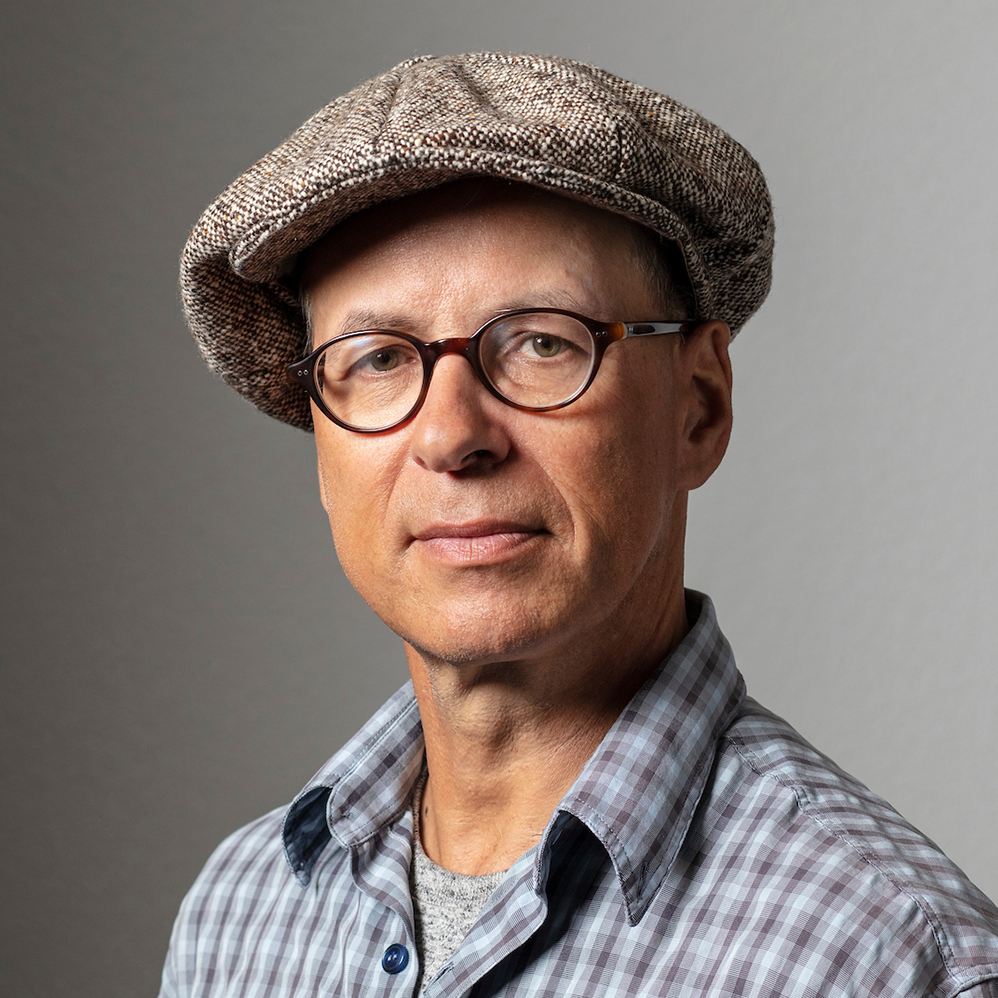
How young parliamentarians are making a Swiss city more child-friendly

Children in Switzerland barely feature in politics – except in a few cities like Lucerne, where for the past three decades a children’s parliament has convened regularly.
The children sit tightly packed on wooden benches in an assembly hall decorated with garlands and pennants bearing the image of a laughing chimpanzee. This is Coco, the mascot of Lucerne’s children’s parliament.
On this Wednesday afternoon, around 90 children between ages eight and 14 are participating in the parliamentary session at the youth centre Treibhaus.
Eleven-year-old Lorena and 13-year-old Mattis, who jointly hold the parliament’s presidency, take the stage to open the session. Mattis reminds the boys and girls of the parliament’s principles: “We accept different opinions and treat each other with respect. If there’s something you don’t understand, just ask. If you want to speak, hold up Coco!”.
The chimpanzee sports a wide grin on the orange card that the kids raise when they want to say something.

Debating like the grown-ups
The children’s parliament is no laughing matter: being a member comes with political rights and responsibilities. The children debate issues that concern them and their peers in all of Lucerne. They can submit postulates similarly to the city council, whose members are obliged to discuss them. The children also have the right to demand information from the authorities.
Lorena and Mattis seem confident when they present the agenda of this session, the first of three that take place each year. The first item already promises a touch of glamour: the prize-giving ceremony of the “Golden Lollipop”.
Three child parliamentarians present the prize – a homemade solar system featuring colourful planets – to the director and manager of the Swiss Museum of Transport in Lucerne. “With its many interactive learning opportunities, the large play area and the wide variety of themes covered, the museum is very child-friendly,” Lorena says in her speech.

Public transport at half price
The children’s parliament is much more than a playground in the political landscape of the city – it is an integral part of it. Eleven-year-old Emily and 12-year-old Lucie, two reporters for the parliament’s magazine, Kiz Blitz, are celebrating the members’ latest achievement, which is illustrated on the front cover.
“We are proud!” reads the headline, and the two girls seem very pleased that children between six and 16 years of age will be able to travel on the city bus at half fare starting this summer. The idea was originally submitted to the city council and eventually approved.
“In the children’s parliament, I can express my opinion and present my own ideas,” one girl explains. “I have the right to vote and can contribute to improving the city and make it more child friendly,” says a young boy.
This extraordinary parliament even has a special team or commission, which is responsible for making the city more child friendly. The so-called city detectives look for potential gaps where the municipality could improve Lucerne’s child-friendliness. The quality of school lunches is currently an issue. The city detectives can discuss this directly with political representatives and the city administration.
In 1993 Lucerne was one of the first cities in Switzerland to establish a children’s parliament. Today, there are about 10 children’s parliaments for children aged between eight and 14, although no parliamentary network exists.
Pupils who want to join the Lucerne parliament can do so without a vote. So far, no applicant has ever been rejected.
Patrons, who are politicians from all parties in the city council, participate in every session.
The highlight in the history of Lucerne’s children’s parliament was the visit of the then First Lady Hillary Clinton of the United States in 1998.
The construction team examines how child-friendly the playgrounds, rest areas, parks, recreational facilities and school routes are.
The finance team looks into applications submitted by the city schools’ student councils and presents the annual accounts and budgets at the first session of the year. And of course, there is the reporting team that puts together the Kiz Blitz. All teams are co-led by a boy and a girl, just like the parliament.
Learning from success – and failure
The fun factor is very important for the children. “It’s wonderful to meet a lot of other kids and go on outings together,” says one of the parliamentarians. One particularly popular aspect of the session is break-time, during which the children do not have coffee and croissants like their adult counterparts might but are served an afternoon snack of syrup, cake and tangerines.
Several members of the parliament stress the learning factor. “On the finance team, I’ve learned how to manage money,” says one of them. This becomes clear in the budget debate, when the children demonstrate good judgement in money management by cutting the circulation of Kiz-Blitz magazine.
Children’s and youth parliaments exist not just in Switzerland but also in Germany, Austria, France, Italy, Belgium, Poland, Great Britain, Estonia, Latvia, Lithuania, Norway, Finland, Denmark, The Netherlands and the Czech Republic.
Overview (selection)
Germany: Around 500 children’s and youth parliaments (“KiJuPa”) at the municipal level.
Austria: The Vienna University Children’s Office in collaboration with the national parliament organises youth and apprentice parliaments. They offer practical insights into parliamentary life through role-playing.
Finland: National children’s and youth parliament for 15- and 16-year-olds.
Luxembourg: Youth parliament for 14- to 24-year-olds.
Delegations from 40 countries are represented in the European Youth ParliamentExternal link. The network is under the patronage of the President of the European Commission, Ursula von der Leyen, and the President of the European Parliament, Roberta Metsola.
The eight-page publication is distributed twice a year to primary-school children in Lucerne. The children’s parliament voted in favour of reducing the circulation from 4,000 to 3,000 copies, a decision the finance team justifies as follows: firstly, demand has dropped in some school classes; and secondly the production costs eat up more than half of the CHF20,000 ($20,172) the children’s parliament receives from the city of Lucerne each year.
The children sometimes have to put up with defeat as well. Last autumn, the city detectives proposed an exhibition about waste around Lake Lucerne for which they even got an artist on board. But the city council turned down their proposal. “It was still interesting to discuss our idea with a lot of different people,” says one of the city detectives.
After a day of engaging in interesting debates, hearing arguments from different perspectives and finding constructive solutions, the children end the session. Even Coco must be pleased the members have proved they are perfectly capable of discussing pressing issues as competently as their grown-up counterparts.
Adapted from German by Billi Bierling/gw

In compliance with the JTI standards
More: SWI swissinfo.ch certified by the Journalism Trust Initiative


















![The four-metre-long painting "Sonntag der Bergbauern" [Sunday of the Mountain Farmers, 1923-24/26] had to be removed by a crane from the German Chancellery in Berlin for the exhibition in Bern.](https://www.swissinfo.ch/content/wp-content/uploads/sites/13/2025/12/01_Pressebild_KirchnerxKirchner.jpg?ver=1ea8acae)












You can find an overview of ongoing debates with our journalists here . Please join us!
If you want to start a conversation about a topic raised in this article or want to report factual errors, email us at english@swissinfo.ch.